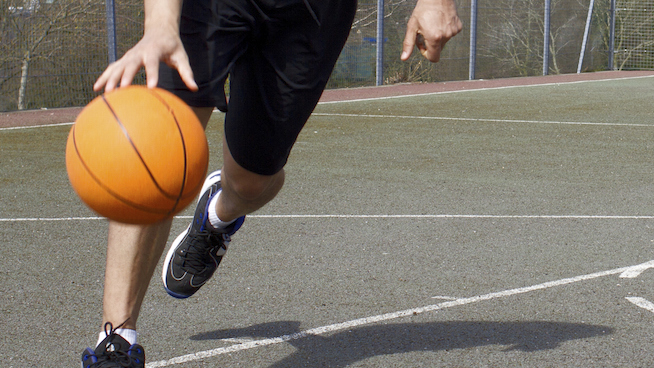Home »
Misc »
How to dribble and run with a basketball
How to dribble and run with a basketball
Exercises for dribbling for beginners and experienced players
Before we dive into the basketball dribbling exercises, here are three basic tips to get you started:
- Take your eyes off the ball. Otherwise you can't see what the opponent is doing.
- Lift your chin, look straight ahead and try to fix your gaze.
- Give equal time to both hands when dribbling.
Your checklist to becoming a good dribbler:
- Basketball dribbling exercises for beginners
- Dribbling with distraction
- Crossover-Dribbling
- Dribbling through an obstacle course
- Dribbling backwards
- Advanced basketball dribbling exercises
- Figure eights
- Crossover with a clap
- Combining dribbling exercises
- Dribbling with two basketballs
Ad
Basketball Dribbling Exercises for Beginners
Before you start the drills, you should be able to dribble in place.![]() From there you can start pushing yourself and leave your comfort zone.
From there you can start pushing yourself and leave your comfort zone.
Dribbling while Multi-Tasking
In a game, the ability to multi-task to imperative.
Dribbling with distraction improves your focus and multitasking skills.
Exercise Set-Up:
- Step 1: Walk across the court while dribbling.
- Step 2: Talk with a teammate while dribbling.
- Step 3: Shake your teammates hand while dribbling.
Crossover-Dribbling
This basketball dribbling drill is regularly used by professional players.
Crossover-Dribbling improves your ball handling and stamina.
For this exercise, stay in place and switch hands back and forth while you dribble the basketball. Slightly bend your knees and keep a straight back.
Exercise Set-Up:
- Step 1: Dribble the basketball from one hand to the other until you feel confident to move on to step 2.

- Step 2: Bend your knees further to decrease your distance to the floor. Depending on how high or low you dribble the basketball, the behaviour of the ball and the force you need to apply to move the basketball will change.
- Step 3: Increase your speed and try to dribble as fast as possible without losing control of the ball.
Tip: To practice low and fast dribbling, alternate between dribbling the basketball with your right and left hand while sitting down.
Dribbling Through an Obstacle Course
Vary the set up of your obstacle course to keep it exciting.
An obstacle course is perfect for training your agility with a basketball. You can build and vary it according to your training level.
Here are a few ideas to get started:
- Slalom with cones and flags
- Gymnastic bench, over which you dribble the basketball while walking alongside the bench.
- Rings into which you dribble sideways as you pass by
- Sprint between two cones while dribbling
- Boxes over which you run while dribbling the basketball
- Lay down a small, narrow track with ropes that you dribble low to the ground through
Did You Know?
Dribbling was only added to the rules of basketball in 1910, a full 19 years after the modern game of basketball was invented. Before that, players were only allowed to pass the ball while standing still.
Before that, players were only allowed to pass the ball while standing still.
Dribbling Backwards
With enough practice, dribbling backwards will become child's play.
To improve ball handling and agility, try dribbling backwards.
Exercise Set-Up:
- Step 1: Dribble in front of your body like normal but walk backwards while you're doing it.
- Step 2: Dribble the basketball around yourself in a circle.
- Step 3: Try to dribble behind your back.
Ad
Advanced Basketball Dribbling Exercises
Got the hang of dribbling and walking at the same time? Here are some advanced techniques.
Figure Eights
The figure eights drill: The perfect exercise to train both hands.
Everyone has a dominant hand when dribbling. Being able to dribble with both hands puts you at a clear advantage and makes you a better, more flexible player.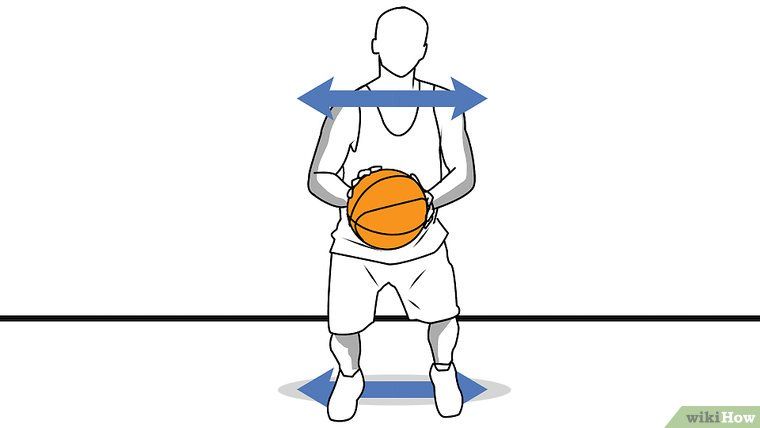
The figure eights is an exercise that lets you train both hands at the same time. Take a wide stance and pass the ball between your legs in a figure eight motion.
Exercise Set-Up:
- Step 1: Dribble a figure 8 until your can do so without error.
- Step 2: Bend your knees further to decrease the distance to the floor.
- Step 3: Try to increase your speed as much as possible. Very deep and fast dribblings are the most difficult. If you want to improve your skills even further, try to go as deep and fast as possible.
Crossover while being Fouled
You can practice these exercises by yourself or in a group.
This drill is perfect to get you ready for game day as it trains speed, focus and especially coordination.
Exercise Set-Up:
- Step 1: Stand an arms length away from a pole or a teammate.
 Now do cross-overs.
Now do cross-overs. - Step 2: While you have the ball in one hand, touch the pole or your teammates hand with the other hand.
- Step 3: Once you have internalized the exercise, you can increase your pace.
Combine Dribbling Exercises
Play a pick up match to get a feel for the game.
Pick a few dribbling exercises you want to perform in a set order or combine with each other. This lets you recreate a game situation and train more effectively.
Here are a few possible combinations:
- Crossover twice in front of your body immediately followed by two crossovers behind your back and a figure eight through your legs. You can repeat this as many times as you like while trying to get faster.
- Set up cones and move back and forth between them. Perform a different exercise at every cone. Try to move as quickly as possible in order to practice quick changes of direction and improve your reaction times.
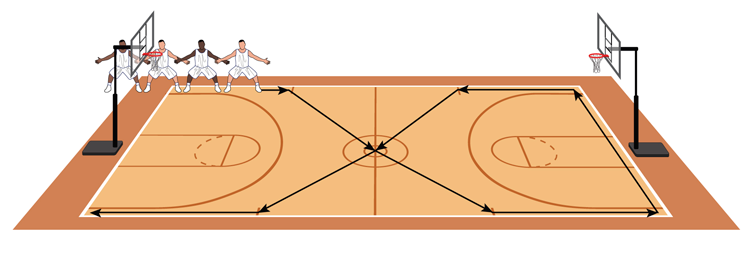
Tip: To make the exercise harder, you can let teammates distract you by letting them slap you on your arms, provoke contact or get in your way.
Dribbling with Two Basketballs
With two balls you can train both hands.
Dribbling with two balls simultaneously is a great way to train both hands. You can set up this exercise with varying levels of difficulty.
Exercise set-up:
- Step 1: Dribble both balls simultaneously while standing still.
- Step 2: Dribble while moving.
- Step 3: Juggle the balls with the help of the floor. Push one ball towards the ground and throw the second ball into your other hand. With your free hand, catch the ball that's bouncing up from the floor. Try to increase your speed as you get better at the exercise.
Practice Makes Perfect
These exercises will help you along your way to mastering the dribble.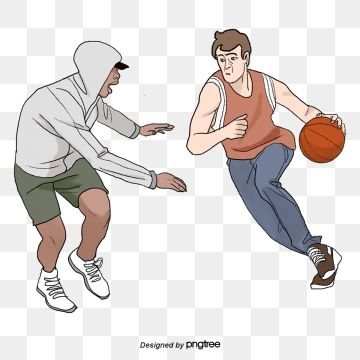 You can read up on the rules of basketball to make sure that you don't commit any fouls while dribbling.
You can read up on the rules of basketball to make sure that you don't commit any fouls while dribbling.
Looking for another challenge? Perfect your jumpshot or dunk.
Don't yet have your dream basketball kit? We have everything from socks to jerseys for your team basketball kit. Create your very own jersey design in our 3D Kit Designer.
Good Luck Training!
Ad
Photo credit: Title picture: © gettyimages/LightFieldStudios, Picture 1: © gettyimages/SeventyFour, Picture 2: © gettyimages/nimis69, Picture 3: © gettyimages/Wavebreakmedia, Picture 4: © gettyimages/miodrag ignjatovic, Picture 5: © gettyimages/Geber86, Picture 6: © gettyimages/oneinchpunch, Picture 7: © gettyimages/Geber86, Picture 8: © gettyimages/BreakingTheWalls.
How To Dribble A Basketball While Running?
When dribbling the basketball, use two hands to keep control and resist using just one hand. Keep your elbows close to your body when you’re running; this will help you move more quickly and avoid injuries.
Use a sideways motion when running – it’ll make dodging defenders much easier. Practice makes perfect – keep practicing so that you can improve your skills as a player
How To Dribble A Basketball While Running?
When playing basketball, use two hands to hold the ball and keep your elbows close to your body when dribbling. When running with the ball, move them side-to-side as you go in order to dodge defenders.
If you’re looking for an easy way to improve your skills, try using a practice court or gymnasium regularly.
Use Two Hands To Hold The Basketball
To dribble a basketball while running, hold the ball with two hands. This will give you more control and stability when bouncing the ball. You can also shoot by releasing the ball quickly with your non-dribbling hand.
Practice makes perfect. Keep practicing until you’re able to dribble and shoot at the same time without dropping or losing the ball. Remember: always use caution when playing this sport – keep an eye on traffic, pedestrians, and other obstacles around you in case of an emergency stop.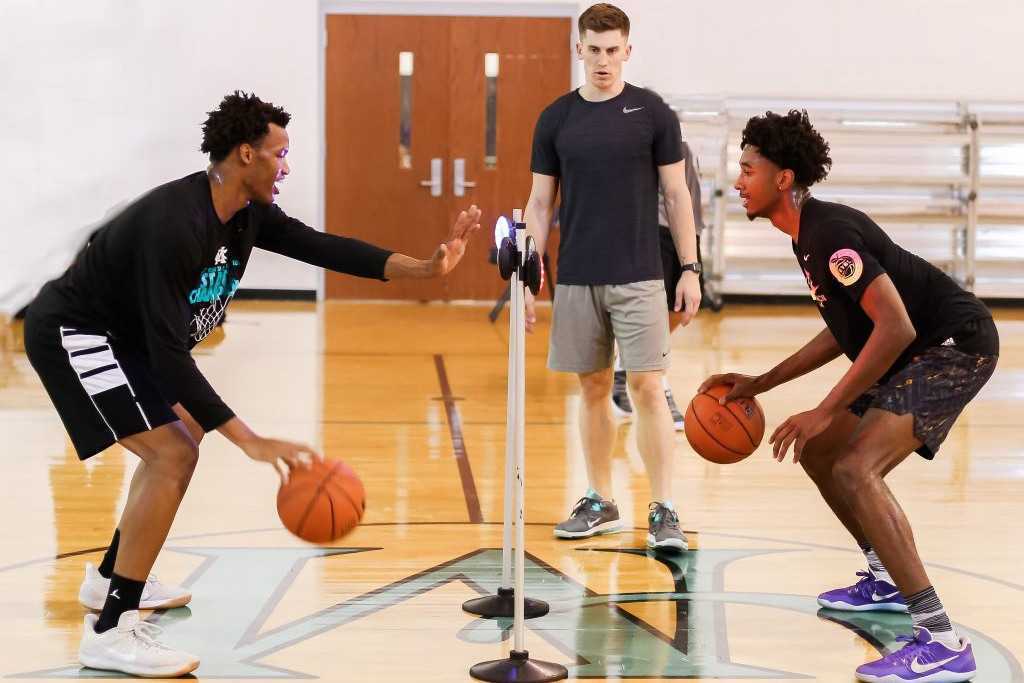
Keep Elbows Close To Body When Dribbling
When dribbling the basketball, keep your elbows close to your body. This way you’ll reduce the chance of losing control of the ball and having it go out of bounds.
Keep your head up and watch where you’re going when dribbling – this will help you make better decisions about where to pass or shoot. Dribble with quick steps in a straight line, making sure that your ball is stable at all times and in front of you so that defenders can’t intercept it easily.
Always be aware of what’s around you while playing basketball – if someone jumps on top of or grabs the ball from you, don’t panic; just try to regain possession as quickly as possible by using either passing or shooting skills. Remember: practice makes perfect.
Move Them Side-To-Side As You Run
To dribble a basketball while running, move them side-to-side as you run. This will help keep the ball in front of you and increase your chances of scoring.
Practice this technique regularly to improve your skills. Make sure to establish good dribbling fundamentals before trying this out on the court or playground.
Make sure to establish good dribbling fundamentals before trying this out on the court or playground.
Remember: practice makes perfect.
Is it better to dribble harder?
When dribbling hard, it is important to control the ball as much as possible in order to maintain possession and make your opponent work harder for the goal.
Dribbling faster allows you to recover more quickly if an opposing player manages to steal the ball from you. Harder dribbles also last longer, meaning that you will have more opportunities to score a goal with them over time.
What are the 3 types of dribbling in basketball?
There are three different types of dribbling in basketball: and-one, two-man game and transition. And-one is when one player cuts to the inside while the other guards them.
Two-man game is where both players stay on their man and switch or double team each other. Transition is when a player gets the ball near the basket and starts running towards either half court line.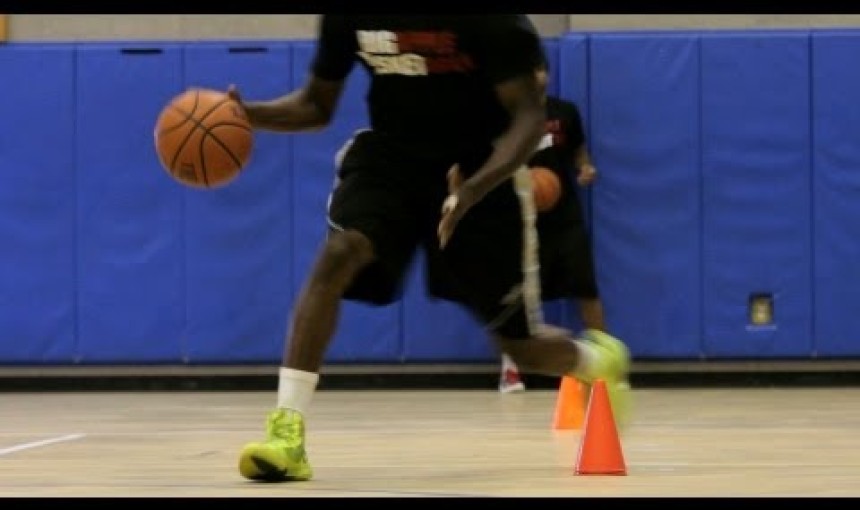
Speed Dribble
A speed dribble is when a player speeds up the ball before taking it down court. This type of dribbling allows the player to get past their opponents more easily and create more separation from them on offense.
Low Dribble
Low dribbles are used for moving the ball around close to the ground, as they allow you to keep control of the ball longer which can lead to easier shots or passes later on in the possession.
Change of Pace Dribble
A change-of-pace dribble occurs when a player takes off quickly from one spot on the court and starts passing or shooting instead of playing defense.
By doing this, they can surprise their opponents and open up new opportunities for themselves on offense or defense
Why do I lose the ball when I dribble?
There are a few reasons why you might lose the ball when dribbling. One is if you’re not controlling your body correctly. You need to keep your head up, stay low to the ground and use your arms and legs properly to control the ball.
Another reason is if you don’t have enough speed or power behind it. Make sure that you get in a good position before shooting, hit the ball hard and follow through with your movement.
- When you dribble with your fingers close to the ball, you are using less arm and leg muscles which will decrease your ability to control the force of your palm. This can cause you to lose the ball more easily when playing soccer or basketball.
- To prevent losing the ball, try to use all of your arm and leg muscles when dribbling. This will make it harder for defenders to steal the ball from you and increase your chances of scoring a goal or making an assist.
- Keep your fingers close to the ball at all times so that defenders cannot grab hold of it easily. Use only palms when necessary in order for you to keep better control over the bouncing ball.
- “Use Your Whole Arm And Leg Muscles” When Dribbling, This Means You Should Squeeze The Ball With All Your Strength, Not Just Your Fingers.

- Finally, always remember: Control The Force Of Your Palm.
Is basketball harder than soccer?
There is no one answer to this question. Some people think basketball is harder than soccer, while others believe the opposite is true. Ultimately, it depends on what you’re looking for in a sport – some people appreciate how athletic and fast basketball players are, while others enjoy watching graceful soccer players maneuver around the field.
- Soccer players are required to run further than basketball players in order to score a goal. Soccer is played on an oval-shaped field with fewer lines and smaller goals, which makes it more difficult for a player to get the ball into the scoring area.
- A soccer player must work with more teammates in order to create an effective attacking strategy or defend against an opposing attack. This teamwork requirement means that there are often less opportunities for one player to take sole control of the game and achieve success by himself or herself.
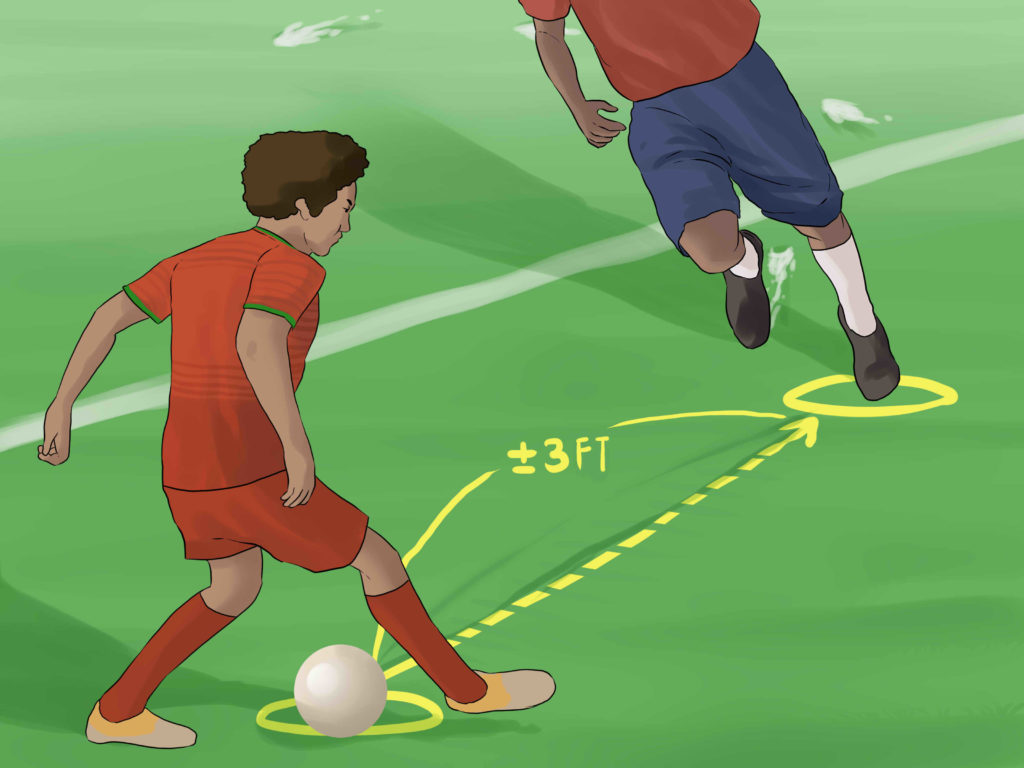
- It is harder for a soccer player to score from a shot at goal compared to a basketball player because of the size, shape and weight of the balls used in each sport respectively . Additionally, many rules do not apply in soccer as they do in basketball (e.g., goaltending).
- Basketball players have an advantage when trying to score over their opponents due largely due their height and ability jump high enough reach the hoop . Soccer does have some notable tall strikers such as Ronaldo who can hit shots above most defenders heads but this isn’t always achievable..
- Finally, while both sports involve shooting balls through hoops ,soccer has few set plays that govern how the ball should be moved around before being released towards the netting whereas basketball relies heavily on dribbling skills which give players greater flexibility during play.
Is dribbling a basketball hard?
Dribbling a basketball is hard if you don’t have the proper technique. Practice makes perfect, so start practicing now.![]() Dexterity and coordination are key for dribblers—you need to be able to handle the ball well.
Dexterity and coordination are key for dribblers—you need to be able to handle the ball well.
Mental preparation is essential for anyone trying to improve their ball handling skills, so work on that before your next game. Keep practicing, and you’ll eventually get good at it.
What skills are needed for dribbling?
If you are dribbling milk, juice or any other fluid from your mouth, it is likely because you have a problem with your teeth. This video shows how to fix the problem and stop dribbling.
Keep Your Eye on the Ball
When dribbling, it’s important to keep your eye on the ball at all times. This way you can control where it goes and make sure that you don’t lose possession of the ball.
Use Both Hands to Control The Dribble
To be a successful dribbler, you need both hands on the ball at all times. You need to use your off hand to help stabilize it while you control its movement with your dominant hand.
Be Patient When Dribbling
If you try to do too much with dribbling, things will likely go wrong for you – which is why patience is key when playing this game.![]()
If defenders get in front of you or block your shots, just relax and let them take the ball away from you; eventually something will happen and chances are good that it will be a scoring opportunity for yourself.
Shoot when You Have a Chance To Score
To Recap
Running with a basketball can be fun and challenging at the same time. Here are some tips on how to dribble a basketball while running:. -Start by holding the ball close to your chest, as this will help you control it better.
-Keep your arms extended forward so that you have more control over the ball when dribbling. -Avoid using your hands too much; just use them to guide the ball towards where you want it to go.
Similar Posts:
American Football Boots Vs Soccer Boots
There are a few key differences between American football boots and soccer boots. First, American football boots typically have a heavier construction than soccer boots, which is necessary in order to absorb more impact when players are running with the ball.![]()
Can You Catch Your Own Airball?
When you play basketball, it’s important to keep your hands close to the ball at all times. If you catch an airball, that is when the ball goes off the side of the court and into your hand before it reaches the ground.
What Is The Curve In Football?
There is a curve in football which affects the trajectory of the ball. This curve, or “s-curve” as it is commonly referred to, makes the ball travel further than if it were round.
What Is A Dime In Basketball?
A dime in basketball is a small amount of money that is given to players at the beginning of each game. It is usually given to the player who makes the first basket, or the player who has the most assists.
How To Hit A Two Handed Forehand?
Hitting a two-handed forehand is an important part of tennis. It’s a great weapon to use against your opponents when you’re in control of the point and need to take the ball away from them.![]()
How To Break In A Nokona Baseball Glove?
Breaking in a new baseball glove can be frustrating, but with a little patience and some elbow grease, you’ll have the perfect glove for your batting needs. Here are five tips to help you break in your new glove fast: Warm up the glove before you start hitting.
Basketball dribbling | Basketball coach
Dribbling is the second way to move a basketball around the court after a pass. Many coaches have a negative attitude towards excessive dribble across the clearing, arguing that only a pass can allow you to play fast basketball and develop tricky combinations. There is some truth in their words, of course. A lot of players pull the ball over and thump it all the time, when it would make much more sense to pass the ball. Basketball is no longer basketball without dribbling, so today we'll talk about how to comprehend this element of the game.
Technique of dribbling
Dribbling in basketball consists in moving the player with the ball around the court and simultaneously making alternate bounces of the ball off the floor with one hand. Simply put, you hit the ball on the floor, and it bounces and comes back. The technique of dribbling in basketball is not difficult, but not every player is good at dribbling the ball. The fact is that the enemy at any second can take it away from you or simply knock it out. Basketball dribbling is mainly used to transfer it to someone else's half or to beat the opponent and then throw the ball. Dribbling out the ball to minimize the risk of a long pass loss and to give teammates time to get into position in the opponent's half of the field. Everyone knows that big players are mostly bad at dribbling and it is easy to take it away from them. And not only because of their height (for tall people, the ball bounces higher and it is easier for small players to knock it out). The fact is that the big ones work out the dribble a little, concentrating exclusively on working under the basket, rebounds, fighting for the position. On the one hand, this is how the roles in the team are distributed in basketball.
Simply put, you hit the ball on the floor, and it bounces and comes back. The technique of dribbling in basketball is not difficult, but not every player is good at dribbling the ball. The fact is that the enemy at any second can take it away from you or simply knock it out. Basketball dribbling is mainly used to transfer it to someone else's half or to beat the opponent and then throw the ball. Dribbling out the ball to minimize the risk of a long pass loss and to give teammates time to get into position in the opponent's half of the field. Everyone knows that big players are mostly bad at dribbling and it is easy to take it away from them. And not only because of their height (for tall people, the ball bounces higher and it is easier for small players to knock it out). The fact is that the big ones work out the dribble a little, concentrating exclusively on working under the basket, rebounds, fighting for the position. On the one hand, this is how the roles in the team are distributed in basketball.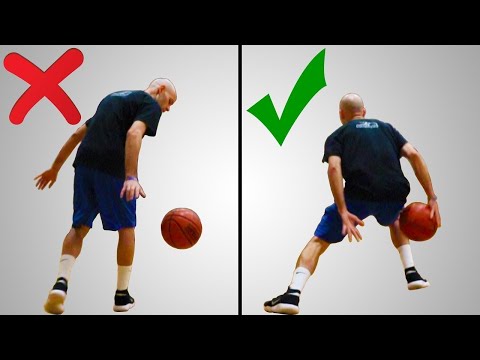 On the other hand, high-quality possession of the technique of dribbling will add versatility to you as a player and will allow you to create a much more serious threat to the enemy.
On the other hand, high-quality possession of the technique of dribbling will add versatility to you as a player and will allow you to create a much more serious threat to the enemy.
Learning to dribble is a constant practice. On the street, in training, at games. The more you drive the ball, the better you will be at it. This is the first truth. The second truth is to drive the ball without looking at it. this is especially important for point guards, who can dribble and analyze the situation on the court at the same time in order to instantly pass or command a combination. In order to quickly learn dribbling in basketball, you must also do various exercises. We recommend up to 15 minutes of dribble practice before each practice using special dribble goggles that cover the view below so the dribbler does not see the ball and learns to feel it.
Dribbling drills 1. Regular dribbling. Before training, when the body is not yet warmed up, you can work on dribbling with a run and kill two birds with one stone.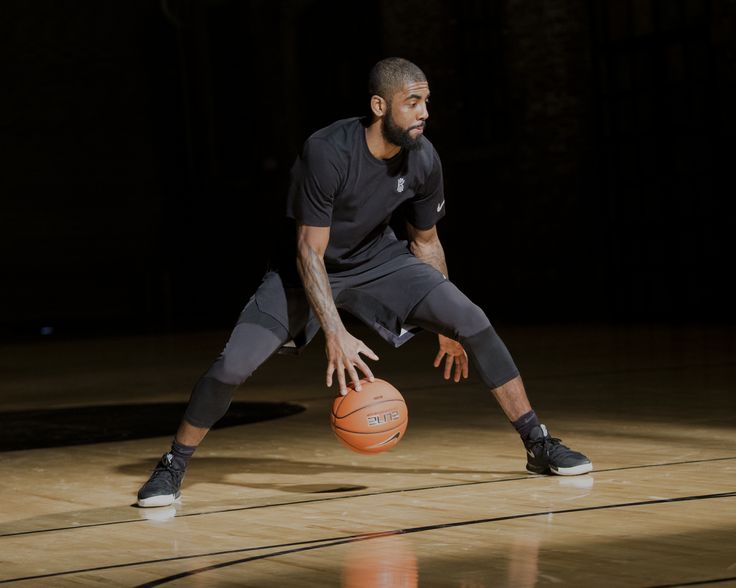
2. Dribbling with two balls. This is a very useful exercise, but to get the maximum effect, you should alternate the method of dribbling: sometimes with a simultaneous rebound of two balls, then with a variable one. You can throw a second ball with a different rhythm.
3. Dribbling backwards and sideways. Try to move the ball and at the same time make a shuttle run around the court, or horizontal movements.
4. Constant dribbling. Even outside the basketball court or court, dribble. Mom asked me to meet you from the stop - take a walk there with the ball. Meet up for a couple of streetball games with friends 3 blocks away - walk around and hit the ball. Dribbling on uneven surfaces is especially effective in developing your coordination.
The Internet is full of manuals and other dribbling aids that recommend doing one, two, three, ten drills that will enable you to become a first-class dribbler. For example, some people recommend sitting on a chair and driving the ball while sitting between the legs or constantly spin the ball between the legs with a rebound height of 10-15 cm. Such exercises will certainly give a certain effect, since the technique of dribbling the ball in basketball can be quite different. But will they be useful in a real game? Perhaps at a streetball game or a freestyle show, but not in an official match. Practice these exercises as you wish. Our team recommends the following video of Indiana Pacers forward Paul George sharing his dribbling secrets.
Such exercises will certainly give a certain effect, since the technique of dribbling the ball in basketball can be quite different. But will they be useful in a real game? Perhaps at a streetball game or a freestyle show, but not in an official match. Practice these exercises as you wish. Our team recommends the following video of Indiana Pacers forward Paul George sharing his dribbling secrets.
First of all, Paul emphasizes that while dribbling, always keep the hand above the ball (and not under it) and actively work the wrist using the pads of the fingers (not the whole palm). You should crouch as deep as possible to dribble the ball at the lowest possible height. When dribbling, you can make a crossover (crossover), that is, transfer the ball from one hand to another. At the same time, the body maintains a straight position, and the eyes look forward. The next element of dribbling, which is actively used in games, is the transfer of the ball between the legs. It is very important to do this translation so that the body is straight with the leg forward and a good squat. Translation behind the back is also often used by basketball players. At its core, it is similar to a crossover, only the ball bounces behind your back. Paul George often uses a turn while dribbling with a change of hand. It is extremely important to learn how to perform these exercises so that you do not look at the ball, but see the entire area in front of you. This is a huge bonus to your speed and reaction to what is happening on the field. practice these 4 basic elements of dribbling before each training session and very soon the progress will be very good.
Translation behind the back is also often used by basketball players. At its core, it is similar to a crossover, only the ball bounces behind your back. Paul George often uses a turn while dribbling with a change of hand. It is extremely important to learn how to perform these exercises so that you do not look at the ball, but see the entire area in front of you. This is a huge bonus to your speed and reaction to what is happening on the field. practice these 4 basic elements of dribbling before each training session and very soon the progress will be very good.
On the field you will always have someone to take care of and prevent you from dribbling calmly. Therefore, you should dribble the ball near you, partially covering the body and the second hand. Always dribble the ball with the hand farthest from the opponent, and with the other - in the truest sense of the word - block his (her) hand from trying to knock the ball.
Summing up . Basketball dribbling is the movement of basketball players around the court with the ball. The ability to dribble balls well allows you to become a much more dangerous player. However, in order to learn how to drive well, you should constantly practice: in the hall, on the court and just on the streets. It is necessary to dribble the ball as low as possible, without looking at it and constantly hiding from the opponent with the body and the other hand. Do a basic set of dribbling drills every practice and the ball will become your best friend in life and on the court.
Basketball dribbling is the movement of basketball players around the court with the ball. The ability to dribble balls well allows you to become a much more dangerous player. However, in order to learn how to drive well, you should constantly practice: in the hall, on the court and just on the streets. It is necessary to dribble the ball as low as possible, without looking at it and constantly hiding from the opponent with the body and the other hand. Do a basic set of dribbling drills every practice and the ball will become your best friend in life and on the court.
Keep training with your basketball coach!
Basketball Basic Basketball Dribbling Rules: Brief and Clear
In modern basketball, dribbling and dribbling are the basic principles of moving around the field. The player cannot take the ball in his hands and run to the ring. This will be considered a violation. And what other nuances of dribbling and dribbling exist? It turns out that you can’t put your other hand forward and take more than two steps with the ball. But it was not always so.
But it was not always so.
In the early to mid-20th century, basketball was more like rugby with hanging rings. Players often pushed, abused mass and strength, played for time. In 1954, the rules were updated, and the game became much stricter about various physical contacts. Now the players had to learn to dribble and not to fight with the opponent. Basketball has become more beautiful and spectacular.
Definitions
Dribbling is the way a basketball player moves around the court. Only with the help of this technique is it possible for the player to move independently. Otherwise, dribbling can be called dribbling. But this definition is more often used when it comes to beating opponents, outplaying them in a one-on-one fight. Now good dribbling has become an integral part of any basketball game.
Despite the high demands placed on players by coaches, almost no one succeeds in turning the ball into their forte. The fact is that basketball is a very fast game in which a big bet is placed on team play. If a player thinks that he will be able to pass 5 opponents using dribbling, then in just a few seconds he will be disappointed. In the NBA, goals in which only one athlete took part are a rarity.
If a player thinks that he will be able to pass 5 opponents using dribbling, then in just a few seconds he will be disappointed. In the NBA, goals in which only one athlete took part are a rarity.
Dribbling technique
To get out of pressure, you need to learn good dribbling technique. It is worth saying that there are several ways of dribbling:
- One hand. The most common way. There is a ball chasing on the ground with one hand, and the second can control the balance of the body. This is the most energy-saving and quiet way to drive.
- Two hands alternately. Also a common technique. It should be mastered by all those who want to increase their level of play to professional players. By changing two hands, you can confuse the enemy, as well as find a more profitable option for an attack.
- Translations. These are hard hits on the floor that lift the ball up to shoulder level with the dribbler.
 In this way, you can swing the enemy and pass into the open space.
In this way, you can swing the enemy and pass into the open space. - Crossover. The essence of this technique is to chasing the ball between the legs. One blow in front of you, and the second - already behind your back. This helps protect the ball from the opponent and does not give him the initiative in the fight.
- Behind the back. This method is rarely used in the real game. Most often it is used to warm up or tease an opponent.
There is approximately one technique for all these methods. Basketball players learn the rules of dribbling for a reason. This is necessary in order to better control the ball and not get injured during an incorrect reception. There are the following rules and tips for dribbling:
- The ball must bounce off the field and bounce off the fingers. No need to grab it with a full palm or try to hit the floor as hard as possible. The main thing is that a little effort is spent on dribbling, and the player’s hands do not get tired.

- Get close to the ground and dribble the ball without letting it go too far. In this position, the opponent will have less time to snatch the ball. It is better to change the style of dribbling, sometimes rising to his full height, and sometimes crouching to the ground.
- Need to unlearn looking at the ball while dribbling. It is advisable to dribble the ball without looking at all. In this way, it will be possible to follow the movements of the opponent, concentrating on the situation in the match.
- It is worth learning how to cover the ball with the body, preventing a player from the enemy team from reaching it. This is quite difficult to achieve, as blind dribbling means that the athlete will blindly control the ball without hitting it against other parts of the body.
- Take into account the angle of the ball rebound is also worth with active dribbling. If you stand and mint at an angle of 90 degrees, then there will be no progress. If the angle is too large, then the ball may not be in time, and if it is too small, then the progress will be too slow.
 Dribbling is very important to professional basketball players as it is the second most important aspect of moving around the field (passing is the first).
Dribbling is very important to professional basketball players as it is the second most important aspect of moving around the field (passing is the first).
Double dribble
This is the name given to the violation when a player starts dribbling again after taking the ball in his hands. This is prohibited by the rules. If an athlete receives the ball from a partner, then he can take the ball with both hands and start dribbling, but only once. Let's say the player stopped dribbling. He takes the ball in his hands and begins to look around the court. Now he has only two options:
- Pass to a teammate.
- Throw into the ring.
All this can be done after two steps with the ball. It will not count as a run. It is worth saying that jumping with the ball in this situation is prohibited. In case of violation of the rules, the player will be declared out of bounds, and possession will be transferred to the other team.
Common Mistakes
Leading is a difficult technique that takes a lot of time and effort to master.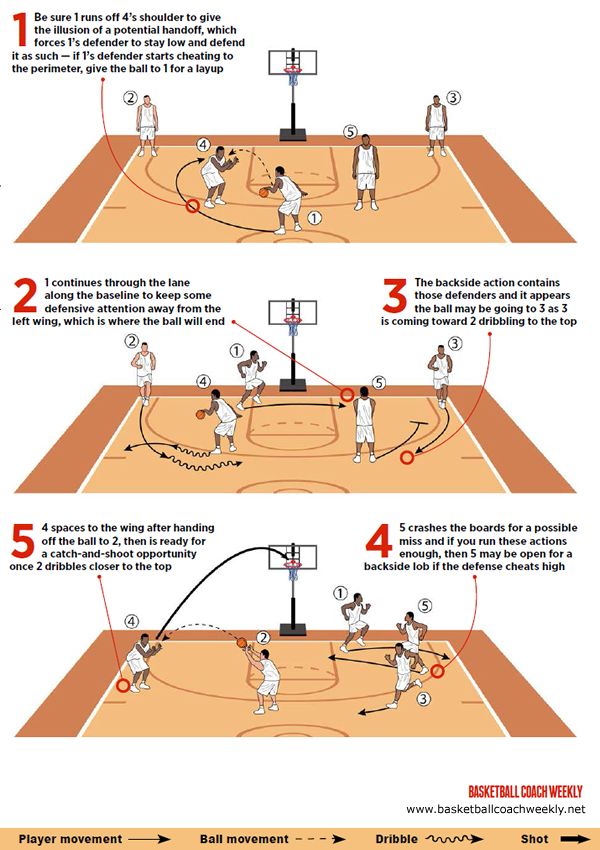 But to increase the value for the team, you can study the most common mistakes:
But to increase the value for the team, you can study the most common mistakes:
- Individualist. If you get carried away with dribbling, it will be difficult to achieve a result. Basketball is a team game where passing is more important than dribbling. You need to look at partners more often and see good moments: both for driving and for assists.
- Flirting. Of course, all professional players have an excellent level of possession of the ball, so they can afford some tricks and tricks right next to the opponent. Ordinary players will not benefit from such “tricks”. It is better to always control the ball, because underestimating the opponent is the main mistake of basketball.
- Push off an opponent. Don't pay too much attention to the opposing team when dribbling. If a player starts to make close contact, then there is a high probability of earning a foul or losing the ball. It is better to go around the opponent or look for an opportunity to pass.
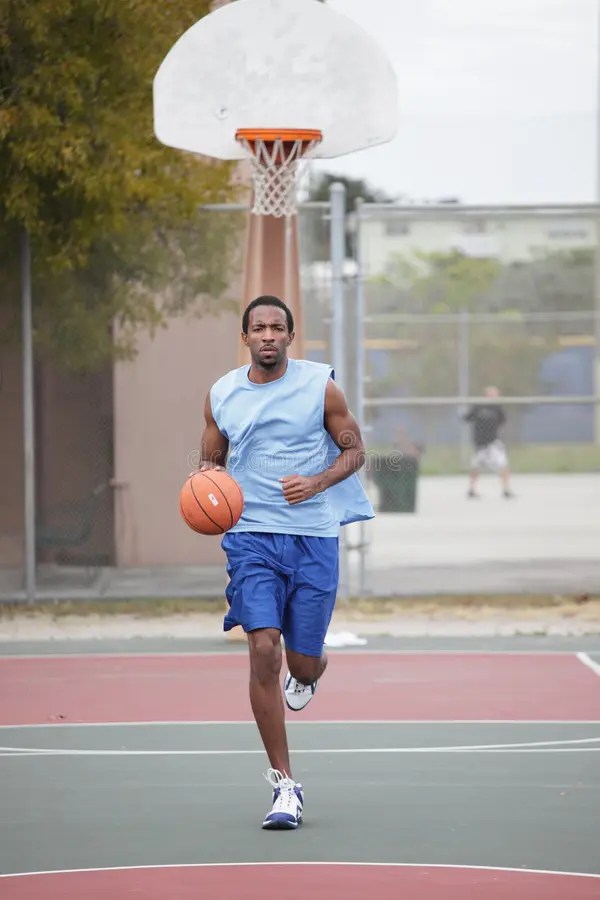
- Do not exercise. Some players think that possession will develop during the game, but this is a strong misconception. Like any other technique, dribbling requires attention and diligence. You need to devote a lot of time to this in order to progress and feel more comfortable during the match.
- Prefer dribbling over throwing. Let's say the player is near the paint line, but decides to get close to the ring and dunk. This decision may result in a loss of the ball or a foul in the 3-second zone. If there is an opportunity to shoot from close range, then it is always worth doing it, and not switching to dribbling.
Drills to practice
To learn good dribbling, you need to practice more. The following exercises will help with this:0003
- Hold the ball in your hand, drop it down in a smooth motion and hit the ground. Only one hand works. This will help develop wrist strength.
- One player picks up the ball, and the second grabs it in a way that suits him.
 Now task number two is to try to get the projectile out. The first player must tense all the muscles to prevent the ball from popping out. Develops strong hands.
Now task number two is to try to get the projectile out. The first player must tense all the muscles to prevent the ball from popping out. Develops strong hands. - Long dribbling. Everything is clear here. You need to go into dribbling and mint the ball for 3, 5, 10 minutes. After the noticeable wobble disappears, and the athlete has a better feel for the car, control over the ball will begin to feel better.
- Dribbling the ball between the legs with a crossover will also help you feel the speed and angle of the ball better. This exercise can improve not only control, but also dribbling skills close to the opponent.
- Alternately dribbling the ball first with one hand and then with the other will also help you feel the game better. A player who knows how to control with both hands will always feel confident on the court.
Important nuances in the game
Keep in mind that successful dribbling requires strong and powerful hands.